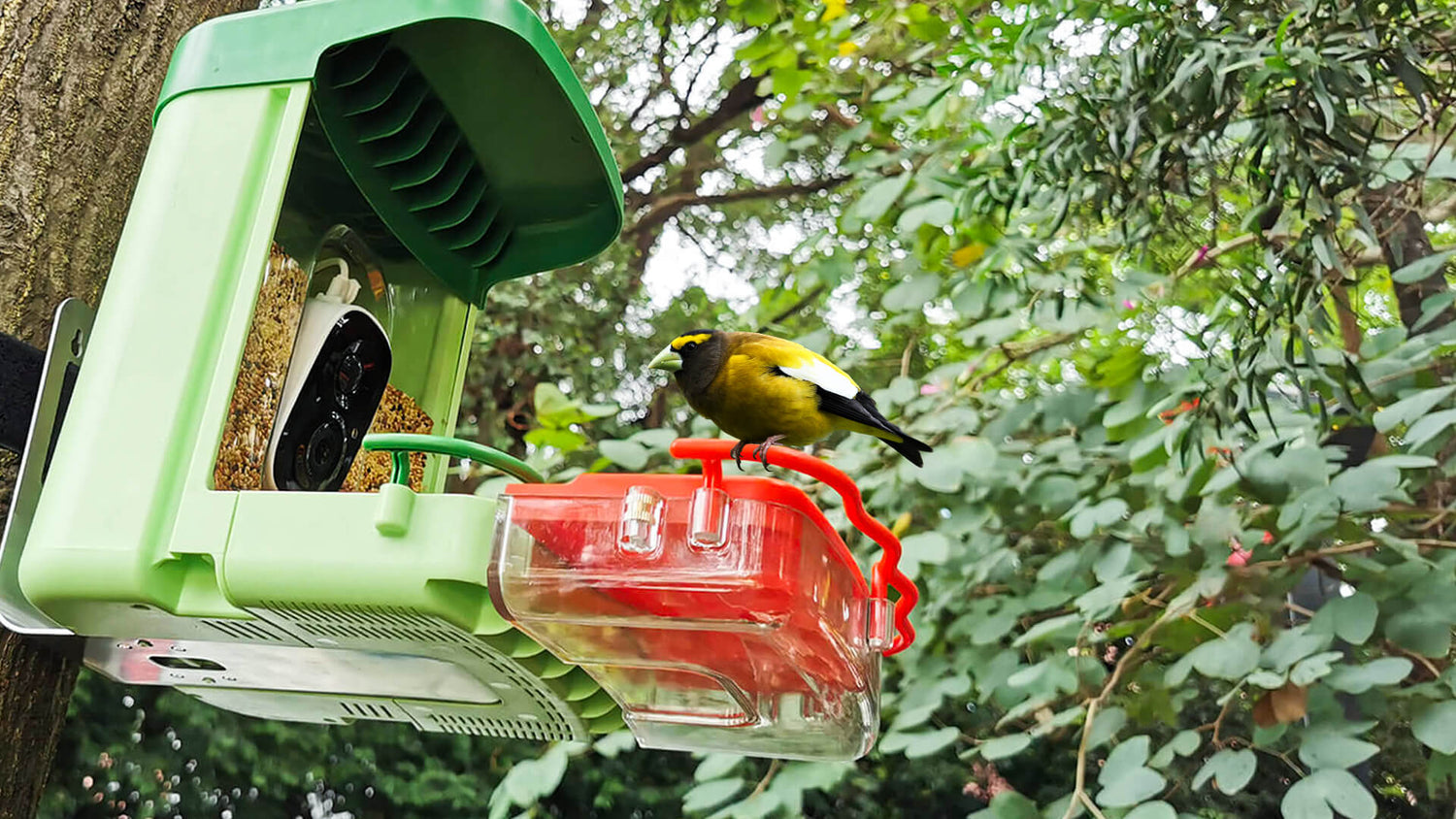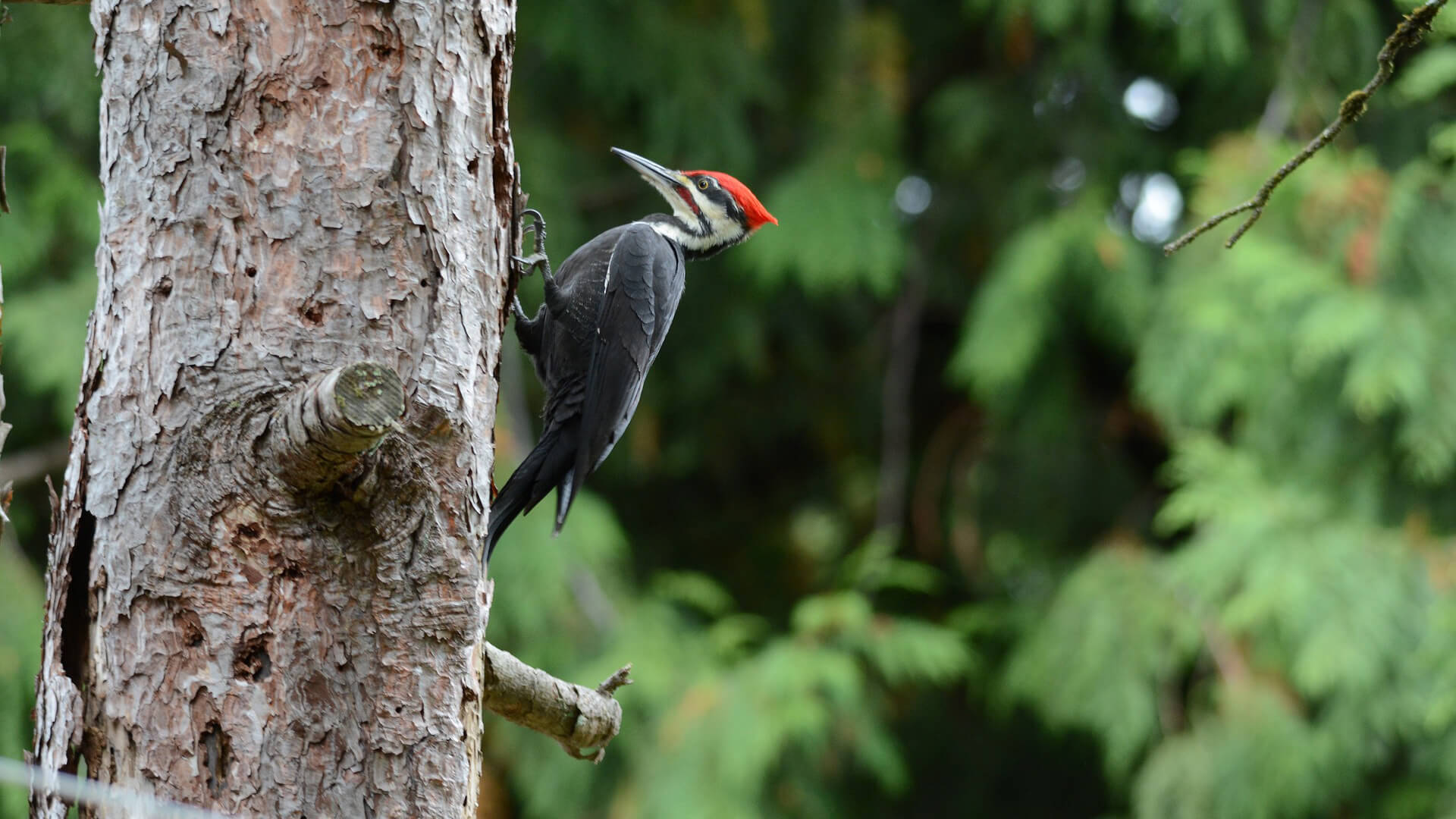The evening grosbeak is a passerine bird in the finch family Fringillidae found in North America.
Evening Grosbeak:
The evening grosbeak and Eurasian hawfinch share a similar appearance, as they are both bulky, heavily-built finches with short tails and large bills. In its adult form, the evening grosbeak features a short black tail, black wings, and a large pale bill. The male adult has a striking yellow forehead and body, with a brown head and a large white patch on the wing, while the female adult is primarily olive-brown, with a grey
underbelly and white patches on the wings.
Basic Info:
Scientific Name: Hesperiphona vespertina
Lifespan: 16 years(oldest)
Size: 6.3 to 8.7 in
Weight: 1.9 oz
Wingspan: 12 to 14 in
Evening Grosbeak Distribution and Habitat:
Evening grosbeaks, which are forest specialists, can be found year-round across Canada and in the western mountains of the United States. During the early 1900s, the species expanded into New England.
When nesting, evening grosbeaks prefer to be high up in trees or large shrubs, such as red spruce, black spruce, Norway spruce, white spruce, Engelmann spruce, white pine, Jeffrey pine, ponderosa pine, and others.
Evening Grosbeak in the backyard:
Evening grosbeaks have a voracious appetite for their favorite feeder food: black oil sunflower seeds! However, when they're not feasting on sunflower seeds at backyard feeders, these birds enjoy a diverse diet of fruits and nuts, buds, sap, and berries. They have a particular fondness for maple seeds, but they also consume insects and other invertebrates.
Evening Grosbeak Breeding:
The breeding habitat of the evening grosbeak is in coniferous and mixed forests across Canada, as well as in the western mountainous regions of the United States and Mexico. Although this bird is an extremely rare vagrant to the British Isles, with only two recorded sightings to date, its nest can be found on a horizontal branch or in a fork of a tree.
The evening grosbeak's migration pattern is known to be variable, with some individuals wandering as far south as the southern United States in certain winters.
These birds are known to forage for food in trees, bushes, and sometimes on the ground. They primarily feed on seeds, berries, and insects, and during the non-breeding season, they often form large flocks. On occasion, they may also ingest fine gravel.




To make your garden an inviting space for Evening Grosbeaks, offering a consistent and high-quality food source is key. The Birdhi Mag Smart Bird Feeder provides a reliable way to keep them coming back while allowing you to observe their beauty and behaviors up close.





1 comment
aqhrpozgil
Muchas gracias. ?Como puedo iniciar sesion?
Leave a comment
All comments are moderated before being published.
This site is protected by hCaptcha and the hCaptcha Privacy Policy and Terms of Service apply.